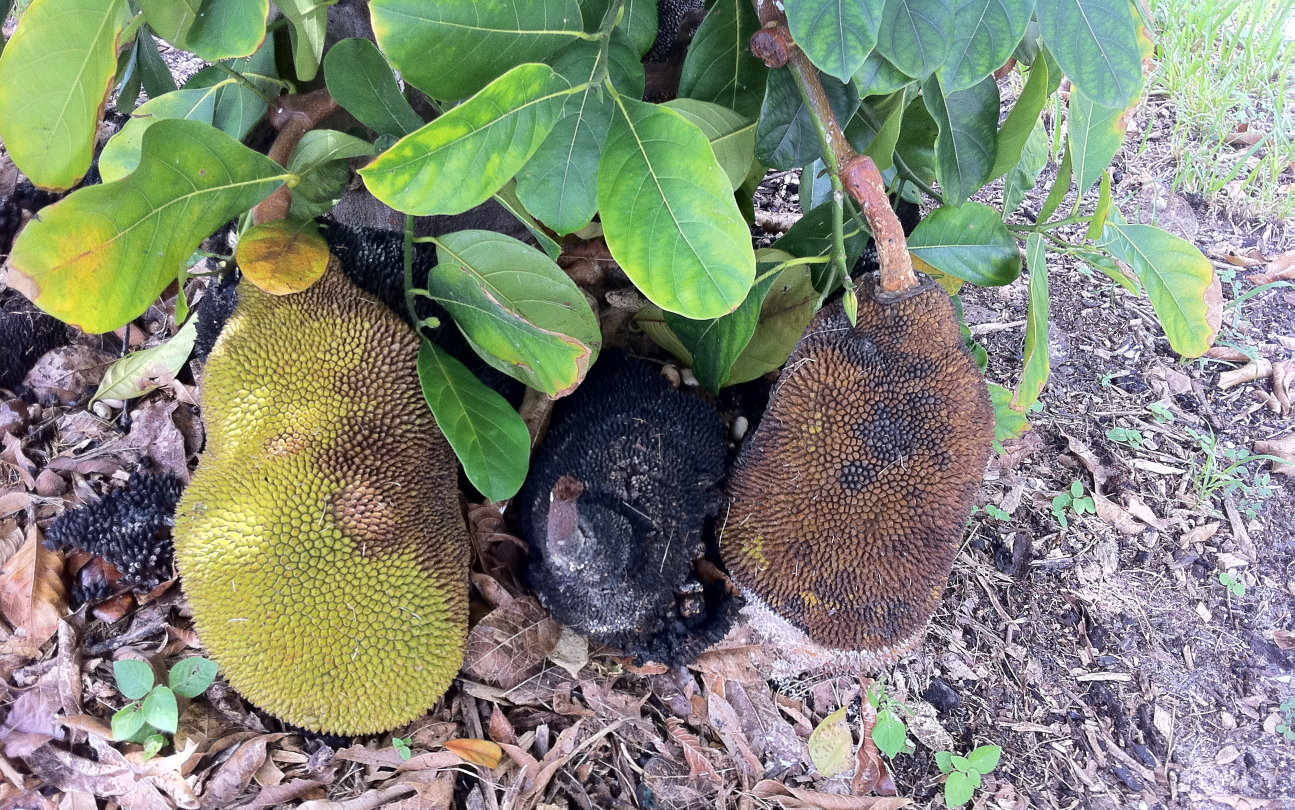Lasiodiplodia Rot
I often talked about the jackfruit and showed you beautiful specimens of them. Like the mango, there is a dark side to this story too: plant disease! Jackfruit (Artocarpus heterophyllus Lam.) can be attacked by many diseases such as Rhizopus, anthracnose and other fruit rot. I took my eyes off this healthy tree that had many beautiful fruits hanging on the tree since June. Today, sadly, I am showing you a photo of the same fruits but not so beautiful anymore. What you see are the same three fruits shown in the photo link above. Note that the large fruit on the left has been removed, perhaps a week ago. Whoever did that probably did the right thing because it would have been lost like all these. I believe the problem is what is called the Lasiodiplodia rot. Lasiodiplodia fruit rot often occurs on mature or wounded fruit while the Rhizopus acts on younger and immature fruits. With Lasiodiplodia, diseased fruits are covered with gray or black flat spot under high humidity. In the early stage of Lasiodiplodia fruit rot, tiny yellow-brown lesions appear on the peel. The lesions can rapidly expand to 10 cm in diameter within 5 days and become dark brown with a light margin. The rot symptoms progress quickly from the surface into the sarcocarps that eventually turn black and soft. The fruits of course are unfit for consumption. Do you know how heavy these fruits weigh? There are still more than a dozen rapidly dying jackfruits on this tree, and getting rid of them will be a big chore. I'll help if asked!



No comments:
Post a Comment